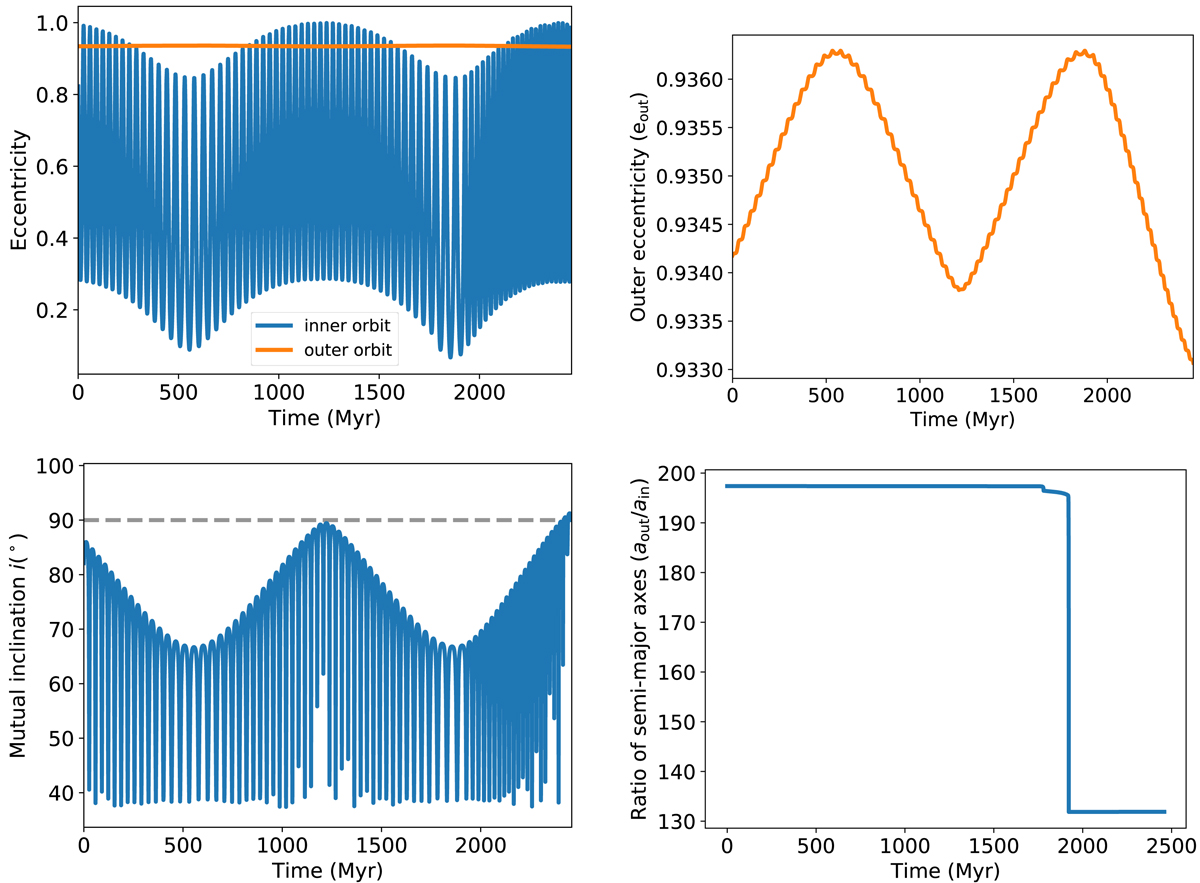Fig. 13.

Second example of a system in which the secondary initiates the first mass transfer phase while the primary has already evolved to the WD stages. Here the interplay between the different terms of the three-body dynamics effects and stellar evolution makes the inner orbit extremely eccentric, leading to the mass transfer phase. Top two panels: eccentricities as a function of time, followed by the inclination and the ratio of the outer to inner semimajor axis as a function of time. The short and long term modulations seen in these figures represent the timescales of the quadrupole and octupole terms, respectively. After the primary has become a WD at ∼1900 Myr, and the inner and outer orbit have approached each other, the system experiences a flip in the orbital inclination (when crossing the black dashed line of i = 90°), accompanied by an extreme eccentricity in the inner orbit and a subsequent mass transfer event. The initial conditions of this system are: m1 = 1.76 M⊙, m2 = 0.26 M⊙, m3 = 1.22 M⊙, i = 82.1°, ain = 7123 R⊙, ein = 0.82, gin = −0.63 rad, aout = 1406013 R⊙, eout = 0.93, gout = −1.12 rad.
Current usage metrics show cumulative count of Article Views (full-text article views including HTML views, PDF and ePub downloads, according to the available data) and Abstracts Views on Vision4Press platform.
Data correspond to usage on the plateform after 2015. The current usage metrics is available 48-96 hours after online publication and is updated daily on week days.
Initial download of the metrics may take a while.


